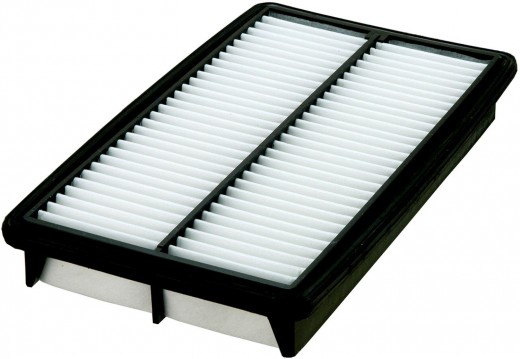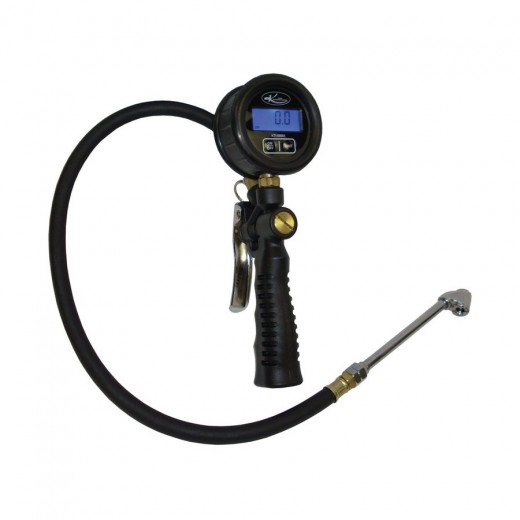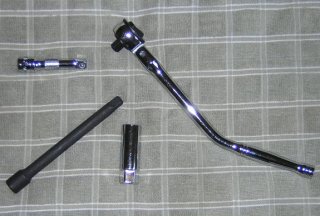Auto Maintenance Table
Not How, But When
This hub will discuss common maintenance items and parts on your car or truck and when they should be inspected and/or replaced.
It's one thing to maintain your car or truck. Another to know exactly when certain items should be checked. You see, since a car or truck is a machine and has moving parts, those parts wear out. Knowing when parts typically wear out means you can replace them before they fail. This will extend the life of the other parts on your car or truck and save you quite a bit of money for unnecessary repairs.



Common Maintenance Mistakes
Beside the potential for injury or property damage, some maintenance should be performed by a qualified mechanic simply because:
- The expertise required takes years to learn
- The equipment used is too expensive
- It's too dangerous for the hobbyist to perform
- Getting rid of used parts presents an environmental problem
Despite this, you should still have a good idea when these maintenance items should be checked or even just outright replaced.
These items include spark plugs, tires, thermostats, air filters, oil, and other "expendables."
Maintenance Table
Item
| Function
| Replace/Inspect By
|
|---|---|---|
Thermostat
| Regulates engine temperature by allowing water from the radiator to flow through the engine block.
| every 24 to 36 months
|
Water Pump
| Forces water through the cooling system
| every 24 to 36 months
|
Fuel Filter
| Strains water or dirt from your diesel or gasoline
| every 24 months
|
Air Filter
| Removes dust and dirt from the air entering the engine.
| every 12 months
|
Tires
| Transfers power from the engine to the road.
| As the manufacturer recommends
|
DPRE switch (AKA EGR Pressure Sensor)
| Emissions Part. Measures the pressure before and after the EGR valve
| every 48 months
|
EGR Valve
| Emissions Part. Causes exhaust gases to be recirculated back through the engine
| every 48 months
|
Catalytic Converter
| Emissions Part. Converts exhaust gas emissions to less harmful chemical compounds
| every 48 months
|
Oxygen Sensor
| Emissions Part. Measures the amount of oxygen in the exhaust.
| every 48 months
|
Fan Belt
| Turns the fan, alternator, water pump, and air conditioner compressor
| every 36 months
|
Brakes
| Stops the car when you press the brake pedel
| every 24 months
|
Spark Plugs
| Ingites the air gas mixture in the engine
| every 24 months
|
Engine Oil
| Lubricates moving engine parts and provides some cooling.
| every 6,000 miles or 9,500 kilometers
|
Which Parts and Why
From the table above I'll explain why these parts need to be examined or replaced.
Thermostat: This part regulates the temperature of the engine by causing water to flow between the engine and radiator. When a car is first started the water in the engine block is stationary. As the engine warms up (and warms the water too) the thermostat will open causing the hot or warm water to flow to the radiator. The radiator then cools the hot water and it returns to the engine block.
Thermostats do not last forever, but in fact two to three years between replacement is more cautionary than necessary. An eight dollar ($8) thermostat that fails can cause $2,000 or more in damage when the engine overheats. The result of an overheated engine can be blown head gaskets, warped heads, burned pistons and valves, and possibly even an engine fire.
Considering how cheap a thermostat is, replacing it every two to three years is inexpensive insurance against a very expensive repair.
This is a simple fix and can be done by most hobbyists without the aid of a mechanic.
Water Pump: This device is usually built into the engine and causes water to be pumped between the engine block and radiator. Water pumps, when they fail, tend to fail catastrophically. This means that in a few short seconds every drop of water in your engine block and radiator can end up on the road. Should a water pump fail your engine can suffer the same damage mentioned above.
A water pump costs between $30 and $60 depending on the engine it is installed on. Labor to install this part is not included in this price range.
Because of it's location and the expertise required this is often better performed by a trained mechanic.
Fuel Filter: This is also an inexpensive part that can save you thousands in damages. This filter keeps dirt and water from getting to your fuel injector/carburetor. Water in your fuel will prevent the engine from being able to burn the gasoline/diesel and dirt can actually clog your carburetor or fuel injectors. Cleaning and/or repairing either of these parts can be quite expensive.
A fuel filter costs between $5 and $15 depending on the car it is installed in. Labor is extra.
Because of it's location and the expertise required this is often better performed by a trained mechanic.
Air Filter: An air filter keeps dirt out of the engine's internals. Dirt and dust can actually cause an engine to wear and fail. Also, a clogged air filter can cause your car to burn more gas than necessary and in turn cause valve problems and rough running. Expenses caused by a clogged or dirty air filter can be from $30.00 to replace the filter to thousands of dollars to replace vital engine parts. A valve reconditioning can run $2,000 to $3,000. An engine replacement even more.
An air filter costs between $7 and $14 dollars.
This is a simple fix and can be done by most hobbyists without the aid of a mechanic.
DPRE Switch/EGR Pressure Sensor: This switch measures the pressure both before and after the EGR valve (see blow). it is part of your emissions control system. It is also one of the causes of the "Check Engine" light coming on. The switch measures the pressure differential around the EGR valve and reports that differential to the computer controlling your engine. Should this part fail it will also cause you to fail a smog inspection should your state require one.
Because of it's location and the expertise required this is often better performed by a trained mechanic.
Replacing this part is not cheap considering it's size. About $100 to $150 dollars for the part alone. This does not include the cost of labor.
EGR Valve: This valve opens and closes allowing exhaust gases to recirculate into your running engine. It is also part of the emissions control system. Because this value is typically positioned somewhere on the exhaust pipe, replacing it often means removing most of the exhaust system. An expensive proposition to be sure. Still the valve should be checked for proper operation and replaced when necessary to pass smog inspection in the states requiring it.
An EGR valve costs between $50 and $150, plus labor, depending on the car it is installed in.
Because of it's location and the expertise required this is often better performed by a trained mechanic.
Catalytic Converter: This is also an emissions control device. They sit either before or after the muffler in your exhaust pipes. The catalytic converter typically contains some form of platinum and can convert the toxic gasses in your exhaust to less toxic compounds. Generally converters are very well made and will last the life of your car. This is a good thing because they can be quite expensive. As with the EGR valve replacing one can also be expensive not only for the cost of the part, but the labor to replace it.
A catalytic converter can run from $50 to $150 each plus the labor to replace it.
Because of it's location and the expertise required this is often better performed by a trained mechanic.
Oxygen Sensor: This device measures the amount of oxygen in your exhaust gases. It is also an emissions control device reporting the amount of oxygen to the engine control computer. This sensor is certain to fail at some point because it is positioned in the hot exhaust gases flowing out of the car.
An O2 sensor runs roughly $28 to $32 for the part plus labor.
Because of it's location and the expertise required this is often better performed by a trained mechanic.
Fan Belt: The fan belt does as it's name implies; it causes the fan pulling air into the radiator to rotate. On more modern cars there is only one fan belt. This belt not only drives the radiator fan, but the alternator, air conditioning compressor, water pump, and power steering (if your car has it) pump. Should a fan-belt fail you can have the same serious and expensive repair problems you'd have with a failed thermostat or water pump. Fan belts typically run $30 to $50 plus the cost of labor to replace it/them.
Because of it's location and the expertise required this is often better performed by a trained mechanic although some cars are so simply designed and built that a hobbyist could also do this.
Brakes: These stop the car. Brakes can be either "shoe" or "pad" types. They operate by creating friction at the wheels thus slowing and stopping the car. Of course these wear out. Shoes and pads are typically sold in sets (two pair) for the front and rear of the car. One set for the front and one set for the rear.
Pads and shoes typically run $55 to $150 a pair, depending on quality, plus the cost of labor to install them.
Because of their location and the expertise required this is often better performed by a trained mechanic. However, an experienced hobbyist should be able to do this job safely.
Spark Plugs: These cause the air/fuel mixture in the engine to ignite and burn. This is the device that causes the explosion of fuel in the engine. Because spark plugs actually sit in the hot gases produced by the explosions they wear out.
Plugs are typically sold individually or in sets of four. Most high quality plugs are "pre-gapped" which means you can simply install them without having to adjust them first. Diesel engines do not use spark-plugs.
Single plugs sell for from $3 to $31 each depending on the quality and materials used in their design. This does not include the cost of labor to install them. Even the cheapest plugs should last two years or more.
This is a simple fix and can be done by most hobbyists without the aid of a mechanic.
Engine Oil & Filter: Many "professional" oil change places tell you to change your oil and filter every three thousand (3,000) miles or five thousand (5,000) kilometers. Well, if you were doing desert or street racing I'd agree, but since most of us don't do that, six thousand (6,000) miles or nine thousand five hundred (9,500) kilometers is often enough.
Engine oil lubricates the moving parts in your engine. As the oil does this it collects tiny metal shavings from the running engine and toxic compounds produced when the engine burns fuel and air. The oil filter captures most of this and extends the life of your oil. But even with the filter the oil darkens over time. As the oil wears out it's ability to lubricate the engine is lost.
This is another of those cheap maintenance items that can save you thousands of dollars if done routinely.
Oil typically runs $5 to $15 a quart. Most engines use five (5) quarts though some use more. The oil filter typically runs $6 to $12 depending on the manufacturer. These prices do not include the cost of labor to replace the oil and/or filter.
Because of the toxicity of used oil and potential mess I recommend the expertise of a trained mechanic. An experienced hobbyist can perform this maintenance as well, but getting rid of the used oil can be problematic.
Oil and Viscosity
Often when you buy or order oil for your vehicle you'll see a set of numbers on the container. These numbers represent the viscosity or how well the oil flows in a warm engine. This flow is also an indicator of how well the oil "clings" to the moving parts of the engine.
Velocities are typically given as a number range with the letter "W" thrown in there somewhere. The Society of Automotive Engineers (S.A.E.) set the standards for these ranges. A winter weight will always have the "W" after it; the high temperature end will just be the number. Winter means 0° F and high temperature will not exceed 210° F.
Thus the "W" stands for winter. Typical viscocity numbers for oil are 10W - 30, 5W - 40 and so on.
Warmer climate typically require a higher viscosity oil. So the higher "warm" number the better. Colder climates require lower velocities; thus the number before the W should be lower.
Disclaimers
Anyone attempting to maintain their car or truck should exercise extreme caution. Vehicles are quite heavy and their weight can easily break bones or kill. The author assumes no responsibility toward the reader of this hub regarding personal safety or simple common sense.
The author, LiamBean, does not own stock or other holdings in any of the companies mentioned in this article. LiamBean has not been compensated monetarily, with free products, or discounts on those products mentioned in this hub.











